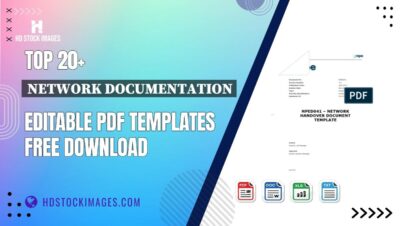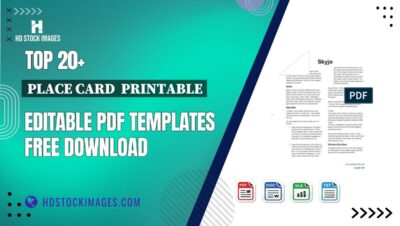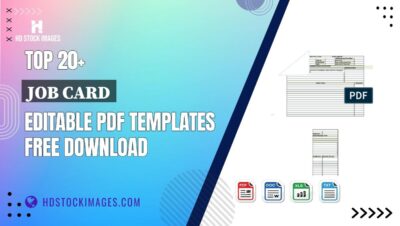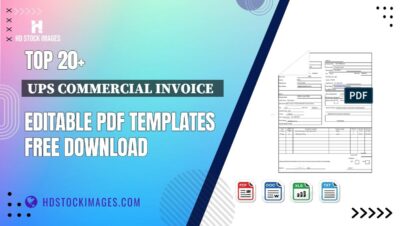In today's digital landscape, LinkedIn is more than just a professional networking site; it's a powerful platform for engagement and visibility. Understanding how often to post can be the key to maximizing your reach and interaction. So, what’s the ideal posting frequency? Let’s dive into the factors that influence engagement and discover how to optimize your strategy for better results.
Understanding Your Audience on LinkedIn

To effectively engage with your audience on LinkedIn, you need to know who they are, what they like, and when they are most active. Here are some essential tips to help you tailor your content:
- Identify Your Target Demographic: Are you connecting with industry professionals, recruiters, or potential clients? Tailoring your posts to meet the interests of these groups can significantly increase engagement.
- Analyze Engagement Patterns: Use LinkedIn analytics to observe when your audience is most active. This data can guide you on the best times to post.
- Consider Content Preferences: Different audiences respond to different types of content. Some may prefer insightful articles, while others engage more with videos or infographics. Experimenting with various formats can reveal what resonates most.
Once you have a clear understanding of your audience, you can start crafting posts that speak directly to their interests and needs. Here are some strategies to ensure your content hits the mark:
| Type of Content | Best Practices |
|---|---|
| Articles | Focus on industry trends and insights. Share personal experiences that provide value. |
| Videos | Keep them short and engaging. Use captions for accessibility. |
| Polls | Ask questions that spark conversation and invite opinions. |
By tailoring your content to fit the preferences and habits of your audience, you can significantly boost your engagement levels on LinkedIn. Remember, successful engagement is not just about frequency; it’s about understanding and connecting with your community in a meaningful way.
Also Read This: What Do the Green Dots Mean on LinkedIn? Activity Indicators Explained
3. Factors Influencing Posting Frequency
When it comes to determining how often to post on LinkedIn, several key factors come into play. Understanding these can help you tailor your strategy for maximum engagement. Let's dive into some of the most significant influences:
- Your Audience: Who are you trying to reach? If your target audience includes busy professionals, consider that they may not check their feeds as frequently. A well-timed post might have a greater impact.
- Content Quality: Quality trumps quantity every time! If you’re consistently producing high-quality posts, you might not need to post as often. A single insightful article can generate more interaction than multiple generic updates.
- Industry Norms: Different industries have varying engagement patterns. For instance, tech professionals might engage more during the week, while creative industries may see more activity on weekends. Research your industry’s trends to find the sweet spot.
- Company Culture: If you’re representing a brand, consider its values and communication style. A more casual company may benefit from frequent, informal posts, while a corporate environment might prefer a more measured approach.
- Analytics and Insights: Don’t forget to check your LinkedIn analytics! Analyzing past performance can reveal the best times to post and the type of content that resonates with your audience.
All these factors are interconnected, and finding the right balance between them can significantly enhance your LinkedIn presence. Experiment with different frequencies and content types to see what sparks the most engagement from your audience.
Also Read This: How to Download My Resume from LinkedIn: Accessing and Saving Your Resume from LinkedIn
4. Recommended Posting Frequency for Different Industries
Now that we've explored the factors affecting posting frequency, let’s look at how often you should be posting based on your industry. Here’s a quick guide:
| Industry | Recommended Frequency | Notes |
|---|---|---|
| Technology | 3-5 times per week | Focus on sharing the latest trends, innovations, and thought leadership articles. |
| Marketing & Advertising | 3-6 times per week | Engagement can be boosted with creative content, including case studies and infographics. |
| Finance | 2-4 times per week | Share insights on market trends and financial advice to establish authority. |
| Healthcare | 1-3 times per week | Focus on patient education and industry updates. Quality is crucial here. |
| Education | 1-3 times per week | Highlight achievements, share educational resources, and engage with the community. |
| Non-Profit | 2-4 times per week | Share stories of impact and engage followers with calls to action. |
These recommendations should serve as a starting point. Your specific audience and the nature of your content may necessitate adjustments. Keep testing and refining your approach to find the posting frequency that works best for you!
Also Read This: How to Add a Resume to LinkedIn: Step-by-Step Instructions
5. Best Times to Post on LinkedIn
When it comes to posting on LinkedIn, timing can make all the difference between your content being seen or getting lost in the shuffle. Understanding when your audience is most active can dramatically increase your engagement rates. So, let’s dive into the prime times for posting!
According to various studies, the best times to post on LinkedIn are typically during business hours. Here are some key points to consider:
- Midweek Wins: Posts published on Tuesday, Wednesday, and Thursday generally receive more engagement. These days are when professionals are most active and looking to network.
- Morning Motivation: The time between 7 AM and 9 AM is often optimal. Many users check LinkedIn before they dive into their workday.
- Lunch Break: Posting around 12 PM can also be effective, as people tend to browse social media during their lunch breaks.
- Late Afternoon: Another good window is between 5 PM and 6 PM, as users wrap up their day and catch up on updates.
However, it’s essential to remember that these times can vary based on your specific audience and industry. For example, if you’re targeting tech professionals, they might have different habits compared to those in finance. So, analyzing your own LinkedIn insights can give you a clearer picture. Consider experimenting with different posting times and tracking the engagement metrics!
Another tip? Keep an eye out for any major events or trends that could influence your audience's behavior. For instance, posting during a big conference or a holiday season might yield different results.
Also Read This: Managing Multiple LinkedIn Company Pages What You Need to Know
6. Tips for Creating Engaging Content
Creating content that captures attention on LinkedIn is an art and a science! Here are some tips to help you craft posts that resonate with your audience and drive engagement:
- Be Authentic: Share your personal experiences, challenges, and successes. Authenticity builds trust and encourages others to engage with your posts.
- Use Eye-Catching Visuals: Incorporate images, infographics, or videos to break up text and make your posts more visually appealing. Posts with visuals are known to receive significantly more engagement.
- Ask Questions: Encourage interaction by asking thought-provoking questions at the end of your posts. This invites readers to share their opinions and experiences.
- Keep It Concise: While LinkedIn allows for longer posts, aim for clarity and brevity. Short paragraphs and bullet points can enhance readability.
- Utilize Hashtags Wisely: Using relevant hashtags can extend the reach of your content. Aim for 3-5 well-chosen hashtags to help users discover your posts.
Additionally, consider sharing industry news or insights that showcase your expertise. Not only does this position you as a thought leader, but it also provides value to your connections.
Lastly, don’t forget to engage with your audience once you post! Responding to comments and encouraging discussions can foster a sense of community and lead to higher visibility for your future posts.
By following these tips and understanding the best times to post, you’ll be well on your way to maximizing your LinkedIn engagement!
Also Read This: How to Showcase a Side Endeavor on LinkedIn to Highlight Your Skills
7. Measuring Engagement: Tools and Metrics
When it comes to LinkedIn, measuring engagement is vital for understanding how your content resonates with your audience. But how do you actually gauge that engagement? Fortunately, there are several tools and metrics you can use to analyze your LinkedIn performance effectively.
1. LinkedIn Analytics: This built-in tool is the first place to start. It provides insights into who’s viewing your profile or posts, how many impressions your content receives, and the engagement rate (likes, shares, and comments). Familiarize yourself with these metrics to track your progress over time.
2. Third-Party Tools: Consider utilizing third-party platforms like Hootsuite or Sprout Social. These tools offer more comprehensive analytics, including audience demographics, peak engagement times, and comparative analysis with competitors. They can highlight trends over time that LinkedIn’s native analytics may not show.
3. Engagement Ratio: Calculate the engagement ratio by dividing the total engagements (likes, comments, shares) by the total impressions and multiply by 100. This gives a percentage that helps you see how engaging your content is in relation to how many people saw it.
4. A/B Testing: Experiment with different types of posts (images, videos, articles) and track which formats yield higher engagement. This method allows you to refine your content strategy based on real-world data rather than guesswork.
In summary, measuring engagement on LinkedIn is not just about tracking likes. It’s about understanding your audience, refining your content, and adjusting your strategy to foster better connections. The right tools and metrics can make all the difference in enhancing your LinkedIn presence.
8. Adjusting Your Strategy Based on Results
Now that you've gathered data on your LinkedIn engagement, it's time to put that information to good use! Adjusting your strategy based on results is crucial for maintaining and boosting engagement.
Analyze Performance: Begin by diving into your analytics. Look for patterns in your most successful posts. What topics garnered the most engagement? Were posts with images more popular than text-only updates? Pinpointing these trends will guide your content creation.
Refine Your Posting Schedule: If your analytics show that your audience is most active during specific hours or days, align your posting schedule accordingly. For instance, if you notice increased engagement on Wednesdays around noon, prioritize posting during that time.
Experiment and Iterate: Don’t be afraid to tweak your content based on feedback. If a particular post format isn’t resonating, try something new! Perhaps short, snappy videos could be the key to grabbing attention. Embrace experimentation; it’s a vital part of finding what works.
Engage with Your Audience: Adjust your strategy by actively engaging with those who comment on your posts. Respond promptly and thoughtfully to comments, fostering a sense of community. This not only boosts your engagement metrics but also strengthens relationships with your audience.
Ultimately, the goal is to be responsive and adaptable. By continuously analyzing your results and making informed adjustments, you’ll create a dynamic LinkedIn presence that resonates with your audience and keeps them coming back for more!
 admin
admin








